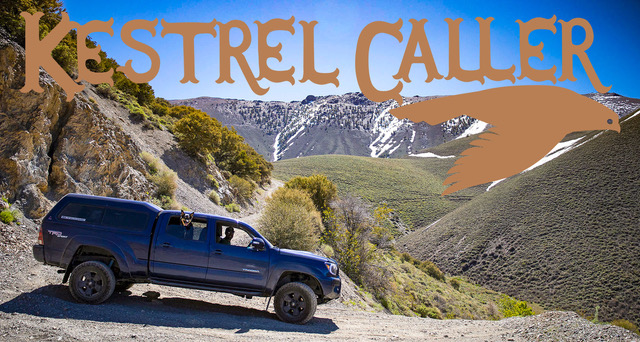In well-documented world where even the most experienced explorers may feel they’ve seen and done it all, new frontiers await in the Great Basin State. They see bleak nothingness, we see the great unmapped, where Western thrills await with abundance—at least within all six of Nevada’s National Natural Landmarks.
Desolate, dead, colorless, lifeless. It’s what just about everyone soaring across Nevada skies surely thinks as they glance down from economy seating on that bleak, brown, flyover state below, and certainly what every road tripper navigating Interstate 80 must say. Hell, it’s even what people think of Nevada who haven’t set eyes on it in any capacity, only relying upon what they hear about it or see in the movies. Why would anyone be interested in visiting this place, they surely ask, where everyone made their mineral fortunes and hit the road more than 150 years ago, and what’s left is dried out, abandoned, and slowly being reclaimed by the desert. Anyone who lives all the way out there must be nuts, and anyone bored enough to venture all the way out there is even crazier!
If I kept a tally on how many times I heard that, even from people being paid to promote the Great Basin State, that number would be, well, a lot. Nevada is often an inexplicable place—so mysterious its ultimate cross to bear is complete misinformation and blatant falsities to the untrained eye or uninformed visitor. And even though this may be an extreme opinion to some, I’ve always strongly felt that if I have to explain it, then they just wouldn’t get it. But for those of us who know, Nevada is King.
Where every type of recreational splendor you can imagine is available just about anywhere you want to do it, and where every once in a while, you’ll find the magic passage between its colossal basins and peaks and the people who’ve so fiercely protected them for generations. It’s a terrain where just about anything you can dream up is within reach, and is not just available, but faultlessly delivers the best hot springs, stargazing, fishing, hiking and backpacking, rockhounding and geologic prowess, wildlife watching, and distinctive histories anyone who actually takes the time to seek out will experience in their lifetimes. It’s a place where every spectrum of the color wheel debunks absurd stereotypes, and not just in places where you know where to look for them, but all around you, all the time.
National Parks, National Monuments, and National Natural Landmarks
There’s no doubt that some of Nevada’s most surprising landscapes are found within, and protected by State and National Park designations, along with Nevada National Monuments which are tallying up now more than ever before. But what about National Natural Landmarks? While National Parks are basically America’s crown jewel landscapes—the tippy-tip of the very top—each protected for their scenic, inspirational, and educational values, National Monuments are usually protected more so for their cultural, historical, or scientific features and can eventually turn into National Parks more often than not because there’s a lot of overlap in those “rules.” National Parks are usually designated by Congress (a long, complicated process), while National Monuments can be declared at the approval of just one person—the President.
While size usually has everything to do with National Parks and National Monuments, National Natural Landmarks are usually far smaller and hone in on protecting a specific feature within—especially when it comes to a vast, broad, and unending landscape like Nevada. Recognizing and encouraging outstanding land conservation across private and publicly owned lands, in some places, a National Natural Landmark can be something like a single cave, submarine cavern, or even an ancient grove of trees. In Nevada, they just so happen to be the largest collection of 40-foot-long marine fossils anywhere, a flowing creek of hot springs that supports a very rare fish found there and only there, a crater so similar to lunar landscapes NASA sent astronauts to train here during the 1950s, the finest, lushest natural wetland in Nevada borders, cataclysmic thrust faulting so vivid your eyes almost can’t process what they’re seeing, and collapsed, off-limits supervolcanoes with overlapping calderas 100x the eruption size of Mt. Saint Helens, which is now part of the world’s most conspiracy-theory-provoking nuclear test site.
In a modern, well-documented world where even the most experienced explorers may feel they’ve seen and done it all, new frontiers await in the Great Basin State. They see bleak nothingness, we see the great unmapped, where Western thrills await with abundance—at least within all six of Nevada’s National Natural Landmarks.

Berlin-Ichthyosaur State Park
It’s one of Nevada’s least visited state parks, if you can wrap your mind around that. At least, in the past decade-or-so, I’ve tried my darndest to unpack exactly how a place that contains one of Nevada’s best preserved 20th century ghost towns, an authentic mine tunnel and mill site that unquestionably reveals what it was like to be a prospector way-back-when, Bortle scale class 1 skies, and one of the most authentic the largest concentration of Ichthyosaur fossils on the planet isn’t all that visited. Then again, the answer is simple and shares a commonality with the rest of Nevada’s best kept secrets—it’s an hour or more off the nearest major highway, and requires moderate determination to see.
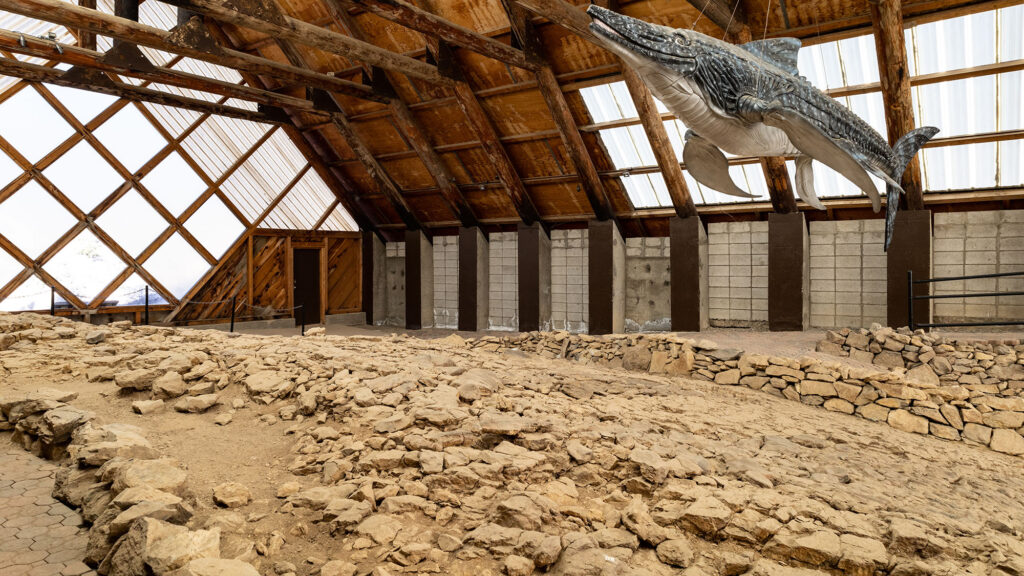
That is until 1928 when Ichthyosaur fossils were discovered, with more significant excavations happening in the decades to follow, through the 1960s. So what even is an Ichthyosaur anyway? Picture this: a 40-foot, freaky-ass sea-swimming reptile that basically resembles a terrifying pointy-faced, long-toothed dolphin. Back when prehistoric Nevada was one water-filled glacial sea, the Ichthyosaur swam freely. But as temperatures rose, water evaporated, and they became extinct and died, it just so happens a large pod of Ichthyosaurs swam their last swim right over modern day Berlin ghost town, sunk down to what was the basin’s low point, collected in a mountainous crevice, and waited to be fossilized (and discovered!) over the next 225 million years.
It’s a lot to unpack! But archaeologists did, most profoundly in 1954 when excavations revealed 40 complete ichthyosaur skeletons, that up until 2004 were also the largest in size ever to be discovered. See these ancient fossil remains at Berlin-Ichthyosaur State Park’s Fossil House, which is located a quick 10 minute drive from the park entrance and Berlin Ghost Town. I must admit I’m still working on my relationship with the giant Icky mural outside the Fossil House, seeing as the majority of people who take the time to visit are only enamored with this thing and not the incredible geologic and mineral histories that surrounds.
For me, the single most fascinating thing about a place like Berlin is that it’s one of the world’s most prolific Ichthyosaur fossil sites (and what earned it National Natural Landmark designation), but long before we humans realized that, we were mining on top of and next to it in the peak of Nevada’s mineral renaissance. Nestled into the Shoshone Mountains, 19th century prospectors were lured back east from the Comstock Lode to cash in on new silver discoveries in Austin, Union, Belmont, Grantsville, Ione, and Berlin. In its peak, Berlin had several hundred residents, who all came to cash in on silver, and later cinnabar and mercury mineral wealths, with a bright but brief boom. By 1911, most detectable profits had been reaped, the population moved on with the closure of the mine, and Berlin joined the rankings of hundreds more once-great mining claims and boomtowns—sun dried, abandoned, and forgotten.
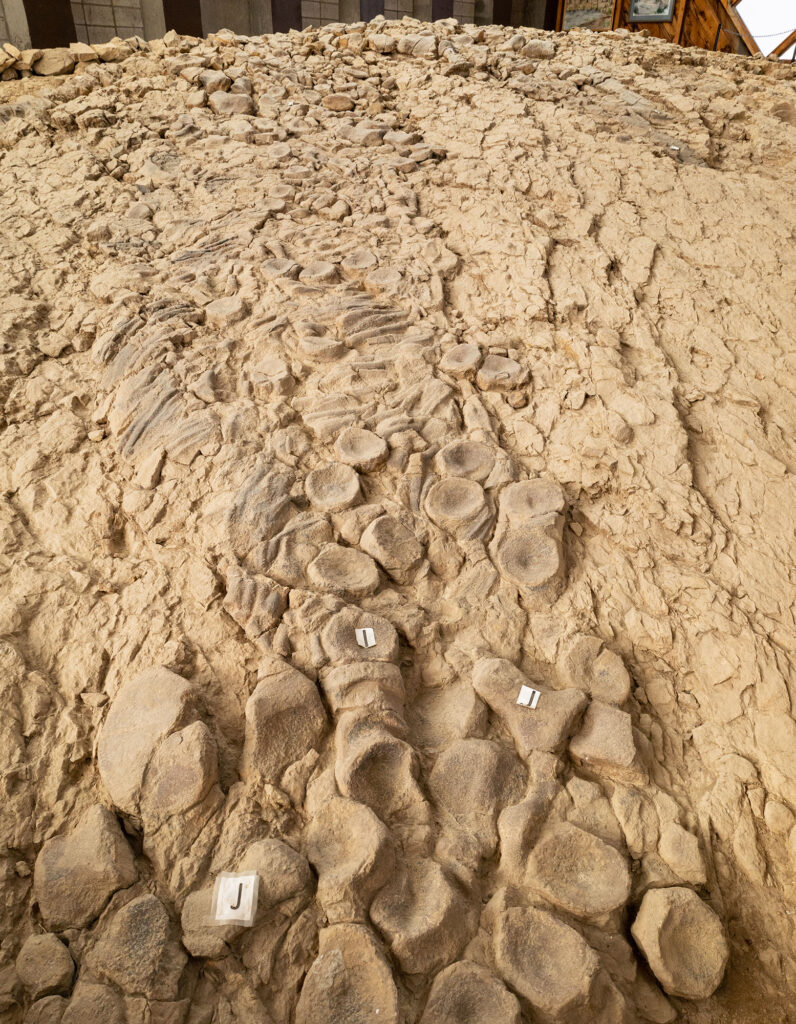
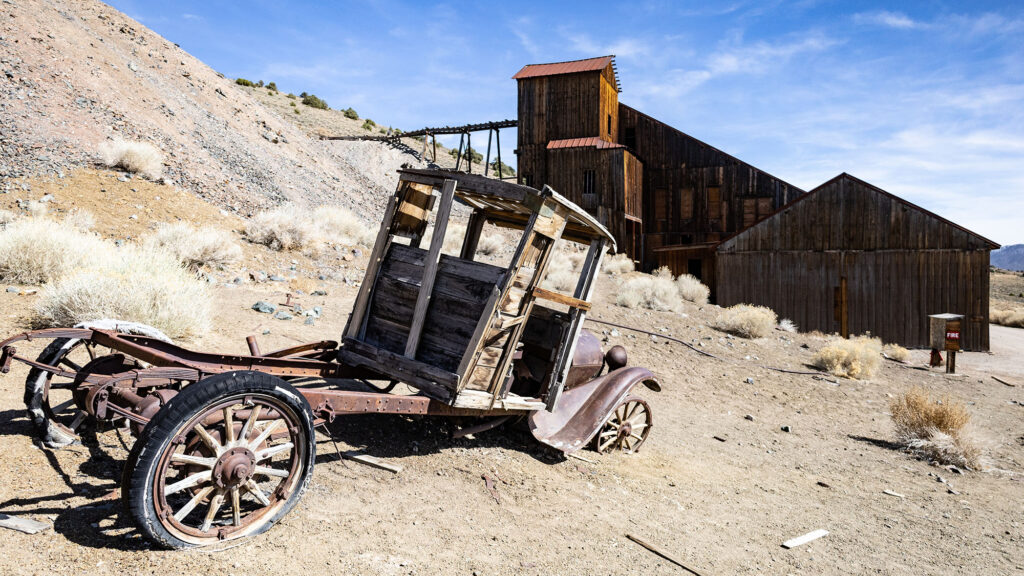

It’s ok though–maybe you, dear reader, will embark on a Fossil House tour, explore dozens of amazing early 20th century structures—ranging from homes, to hand-chiseled mining tunnels, to enormous mill sites with ore carts still intact, to machine sheds with 60 mile views—and learn the stories of the people who kept the bricks upright. Go for the fossils, then stay for some of the best stargazing conditions in the world. Either way, be sure to leave with a plush, Ichthyosaur in hand from the gift shop—there’s no better way to celebrate this Nevada National Natural Landmark.
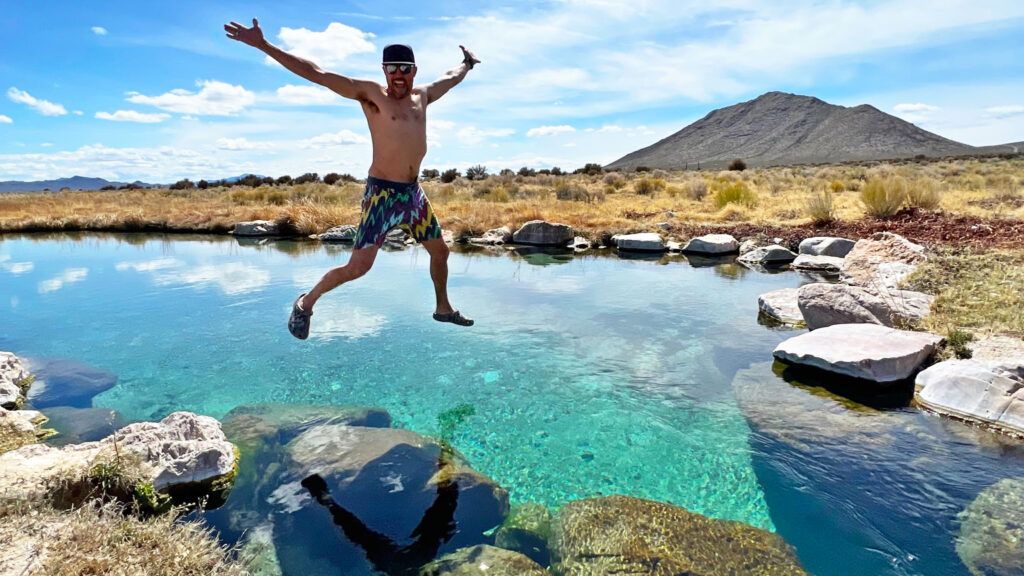
Hot Creek Springs & Marsh
There’s no truer Nevada experience emblematic of a desert mirage than Hot Creek Springs & Marsh. A vivid vision of cerulean blues and shimmering turquoise, the scene that awaits at this “outstanding spring and wetland area” surely belongs in the tropics and not the driest state in America, but its appearance has little to do with its National Natural Landmark designation. Here, it’s all about the White River Springfish.

Through the years, each grouping of fish evolved slightly differently, now each around the same age but special in their own unique ways. These teeny-tiny fish, for the most part, are typically thriving in naturally flowing warm creeks, springs, and pools all over Nevada, but are commonly found in southern Nevada bodies of water where temperatures are consistently warmer. This is true at places like Spring Mountain Ranch State Park, Ash Meadows National Wildlife Refuge, Crystal Springs, and Soldier Meadows, to name a few.
Like the Devils Hole Desert Pupfish and a long list of tiny, ancient fish in crystal-clear pools in all corners of the Silver State, the White River Springfish lives here, and only here. Basically, millions of years ago when Nevada was submerged in water, temperatures rose and water levels receded, segregating tiny fish into their own separate, isolated pools and ponds.

It’s one of those places almost too surreal to experience, at least the way I always feel leaving, having swam through an ancient flowing marsh that just so happens to be the ideal habitat for these prehistoric beings. And while I fiercely believe this about almost all of Nevada, there’s no more obvious paradise found, and paradise threatened. Ash Meadows National Wildlife Refuge, which now beholds several different types of pupfish, was open to the general public within very recent history where people camped, swam, partied, and threatened the fish. I can’t help but wonder if Hot Creek Springs & Marsh may have the same fate in the not-so-distant future, so for now and like the rest of the Great Basin State, love it like you may lose it. It’s too special a place not to.
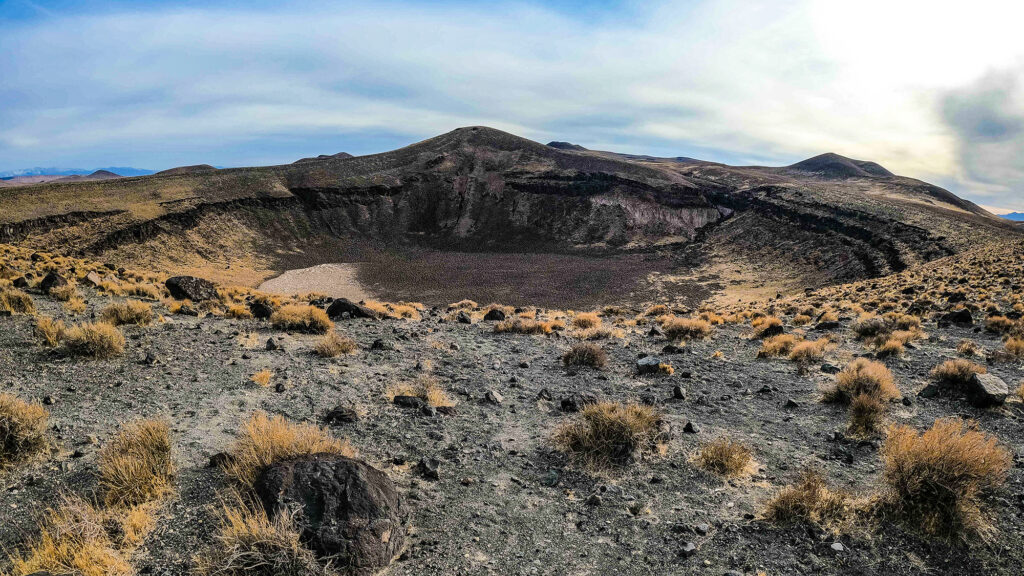
Lunar Crater & the Timber Mountain Caldera
When you stop to think about it, most of Nevada’s (and the nation’s) most gorgeous landscapes were formed by cataclysmic events. We’re reminded of this every few years, when entire roads are swallowed up by raging torrents in Yellowstone, chunks of Half Dome fall off, or Death Valley National Park experiences a “thousand year flood.” We’ve got some seriously violent physical events to thank for billions of dollars in mineral bonanzas, more than 300 hot springs sources, jagged peaks, black fire opals, canyon gorges, and many more beautiful landscape features far too many to list individually.
Two of Nevada’s National Natural Landmarks are rooted by powerful volcanic histories: Lunar Crater, and the Timber Mountain Caldera. Even though there was volcanic history happening all across the Great Basin (which also happens to be one of the reasons Nevada beholds some of the best rockhounding in the West, and is how natural garnets and black fire opals formed), there’s no better place to feel its geologic magnitude than the edge of Lunar Crater, the largest natural crater in Nevada borders.
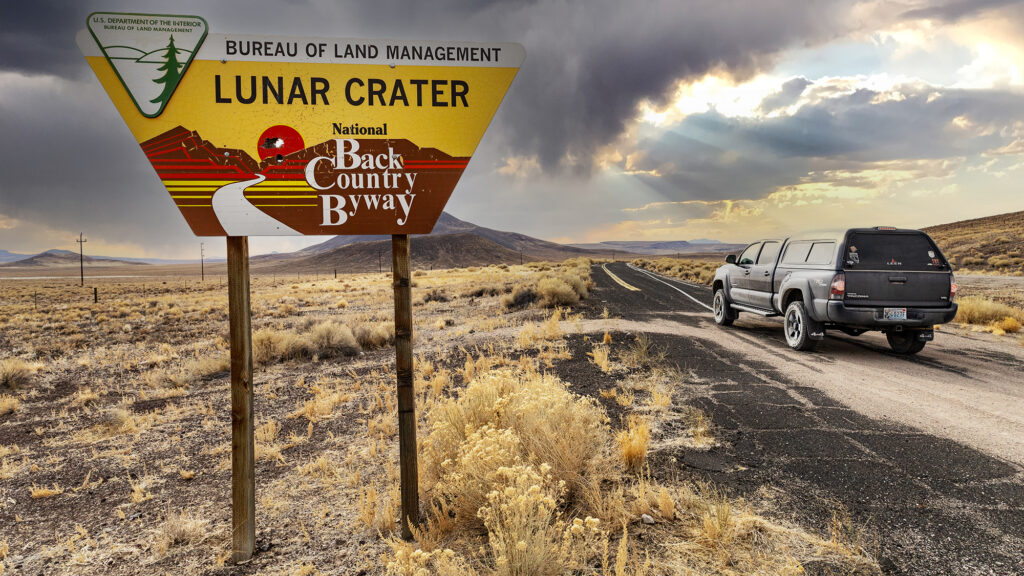
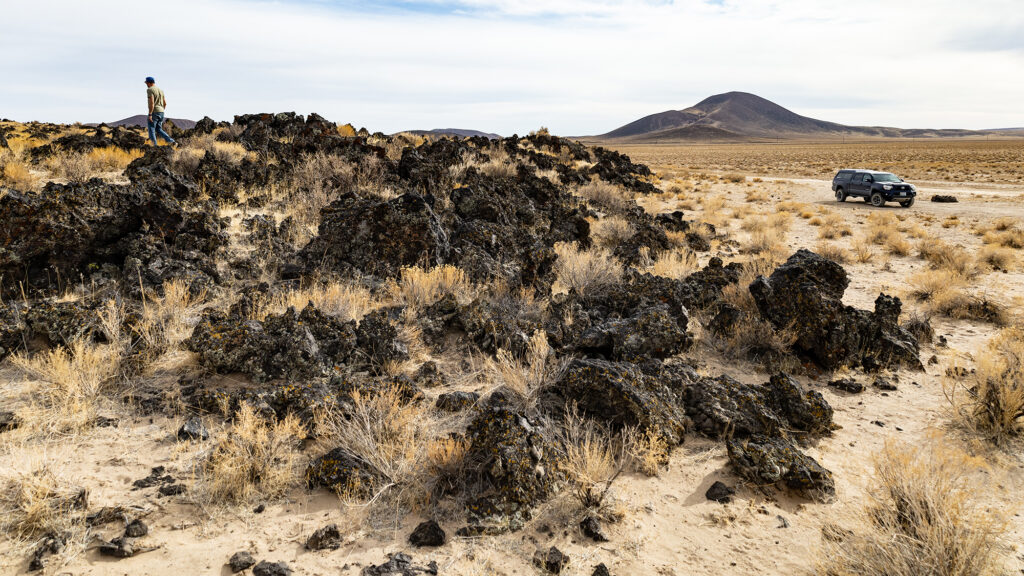
This massive crater and ancient obsidian-laden lava bed is the main attraction among 20 extinct volcanoes within a few miles from each other and the good news is this: one of the best backcountry byways in the state tours right through it. Not far from the one-and-only Extraterrestrial Highway, the Lunar Crater Backcountry Byway is directly off Highway 6 (which is a very remote passage between the rural towns of Tonopah and Ely), and pretty close to the geographic center of Nevada. A result of groundwater colliding with magma (or what experts call a Maar), Lunar Crater is 430 feet deep and such an otherworldly landscape that NASA decided it was the ideal training ground for astronauts preparing for missions to the moon. In the 1970s, they drove rovers around inside it, collected rocks and other samples, and treated the mission to middle of nowhere Nevada as if they were in fact, on the surface of the moon.
While Lunar Crater is the largest natural crater in the Silver State, the largest man made crater awaits over an invisible border a few miles to the south, at the Nevada Test Site. Sedan Crater is the result of abundant nuclear testing that happened in the majority of Nevada’s southern half during the 1950s, and its off-limits boundary contains many geological features most of us will never get to see, thanks to super competitive once-a-year offered tours, and mandatory high-clearance permissions required to enter.
An example of one of these features so secretive there aren’t really even any pictures of it floating around on the internet is another Nevada National Natural Landmark: Timber Mountain Caldera. It’s the planet’s youngest supervolcano, and like Lunar Crater, is made of a field of many extinct volcanoes with depressions that are 100x the eruption size of Mount Saint Helens. It’s inside the Nevada Test Site, now called the Nevada National Security Site, just outside Beatty and beholds many overlapping calderas, or large depressions formed when a volcano lake erupts and collapses—imagine a scene that looks like Crater Lake. Today, Timber Mountain Caldera remains off limits to the general public, guarded for its economic prowess as one of the largest natural lithium deposits on the planet.
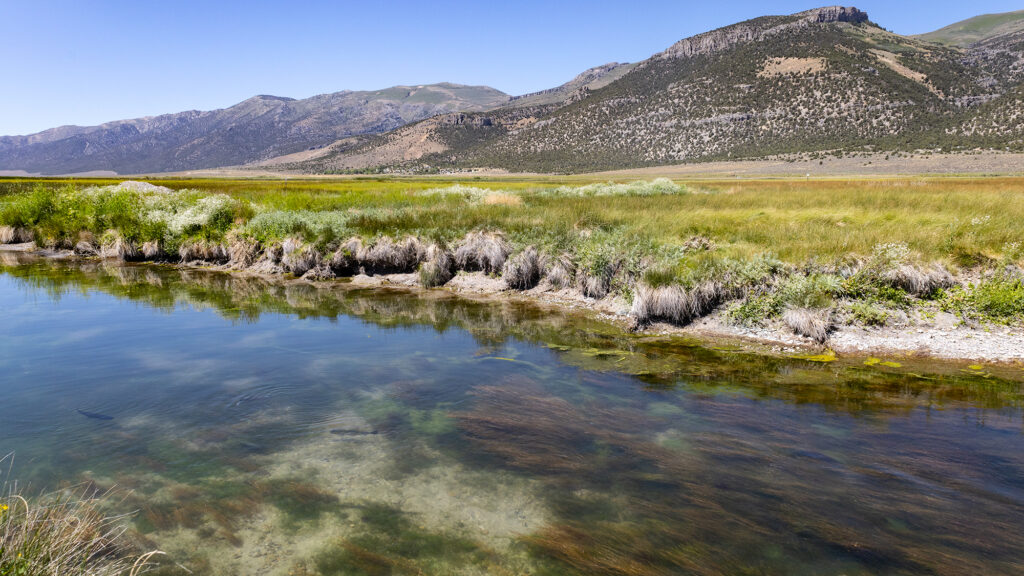
Ruby Lake National Wildlife Refuge
Nevada’s barren stereotypes go out the window, and quick, with one look at a place like Ruby Marsh. Almost all Nevada National Wildlife Refuges in are play for one thing, and one thing only—safeguarding sacred, flowing waters that provide a dependable lifesource for hundreds of migrating and resident birds, deer and elk, coyote and bobcat, jackrabbit and kangaroo rat, reptiles and insects.
Having visited Ruby Lake tons of times I knew what an atypical oasis it was for humans and animals alike, but didn’t realize its enormity until I was thru hiking the Ruby Crest Trail one summer and able to take it all in from up above. Distinctively massive and unforgettably elaborate, spring fed marshes and shallow wetlands make up the largest, most pristine wetland in all of Nevada—which is how it earned its National Natural Landmark designation—nestling up against the Ruby Mountains at 16 feet long and 3 miles wide. And the superlatives don’t stop there—Ruby Marsh spans nearly 40,000 acres, and is fed by 200 natural cold springs that flow all 12 months of the year, and in addition to the largest and most pristine wetland, it’s also the most isolated wildlife refuge in the Lower 48 states, and home to some of the best birdwatching in Nevada.
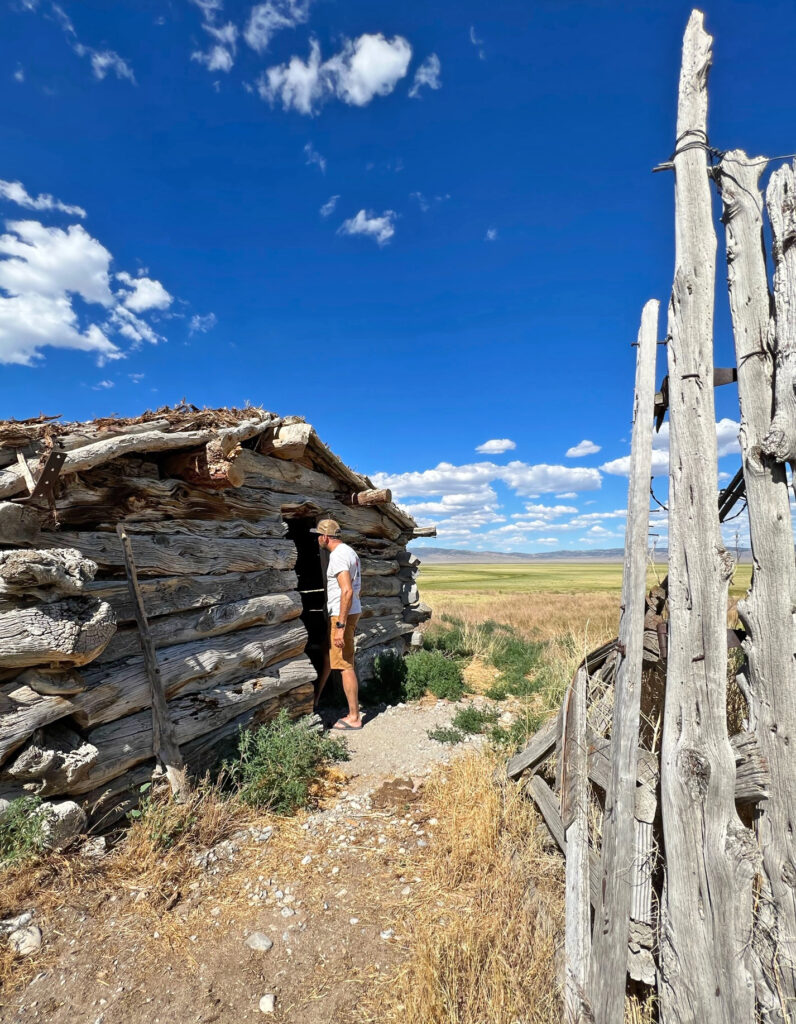

But long before all of those important designations, Ruby Valley and the lush wetlands within were sacred homelands for the Shoshone, who moved throughout the Great Basin as seasons came and went. The Ruby Marsh was a dependable lifesource for them where they could do just about everything they needed to all in one place, and throughout the year. By the 1850s, as pioneers arrived and made their way across the West, some followed an offshoot of the California Trail called Hastings Cutoff, which went directly through Ruby Valley.
And as you might imagine, the Shoshone, who outnumbered some of these early European arrivalists by the thousands, were not very happy to see them. “Indian Raiders” they were called, and a US Army Fort was quickly built at the southern end of the marsh to protect the Conestoga crowd—Fort Ruby. Even though we travel to a place like Ruby Marsh for vacation in modern times, back then, Fort Ruby was considered to be the “Worst Post in the West”, where soldiers were sent as punishment. Try and wrap your mind around that—I still can’t.
Not much is left of old Fort Ruby, the old Pony Express Station that once stood there was relocated to the Northeastern Nevada Museum in Elko (where you can see it displayed), and after the soldiers moved on, most of the buildings were adopted by area ranchers. You can still see one of the main buildings there, who was utilized by ranchers and later a historical figure who became known as “The Father of Ruby Valley.” But the real action here is in the trout and bass fishing scene, where fishermen run drift boats through a dizzying labyrinth of wetland channels all year long, along with of course some of the best birdwatching in the West.
Ruby Lake is located along the Pacific and Central Flyways, and considered to be one of the most important bird areas in the entire world. The refuge is an important nesting ground for Sandhill Cranes and Trumpeter Swan, and is the largest breeding ground for canvasback ducks anywhere west of the Mississippi, but the pros estimate you can see more than 220 species of birds, any old day. I can’t remember a time when I visited Ruby Marsh and didn’t see a Golden Eagle, Pelican, Kestrel, and too many songbirds and finches to count. Getting out on the water is one of the better ways to experience Ruby Marsh, but there are plenty of photo blinds, marshy beaches, and wide spots in the road perfect to pull over, look and listen.
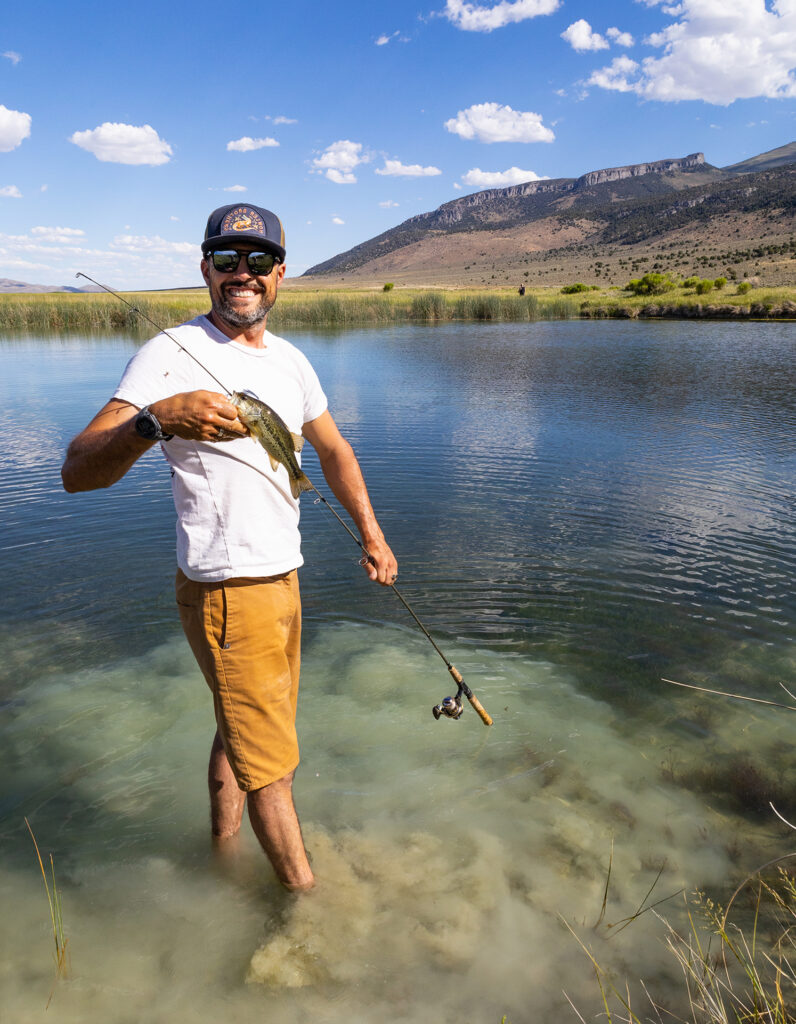
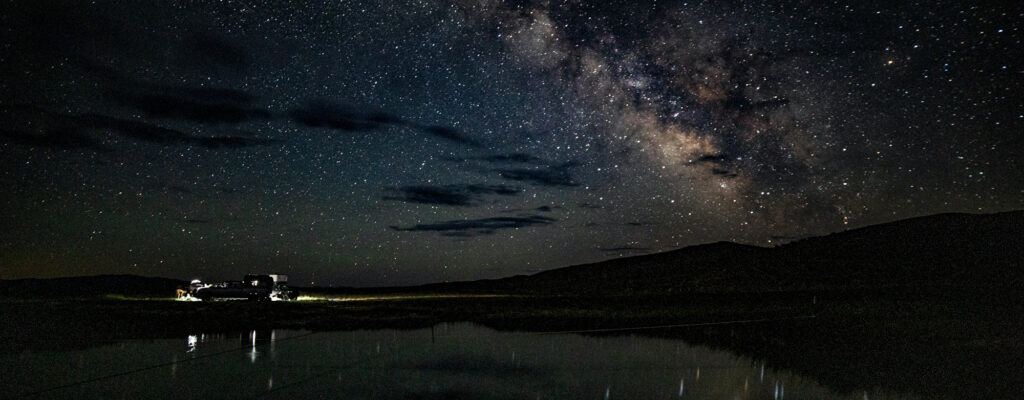
And at the end of the day, whether you’re returning to your camp at USFS managed campgrounds on the refuge, heading back up and over Harrison Pass to Elko, heading south to Highway 50, or you’re hitting privately owned hot springs in the valley, try and time your trip around a new moon, with plans to stay at least one night here—you’re sure to see a celestial show of a lifetime if you do.
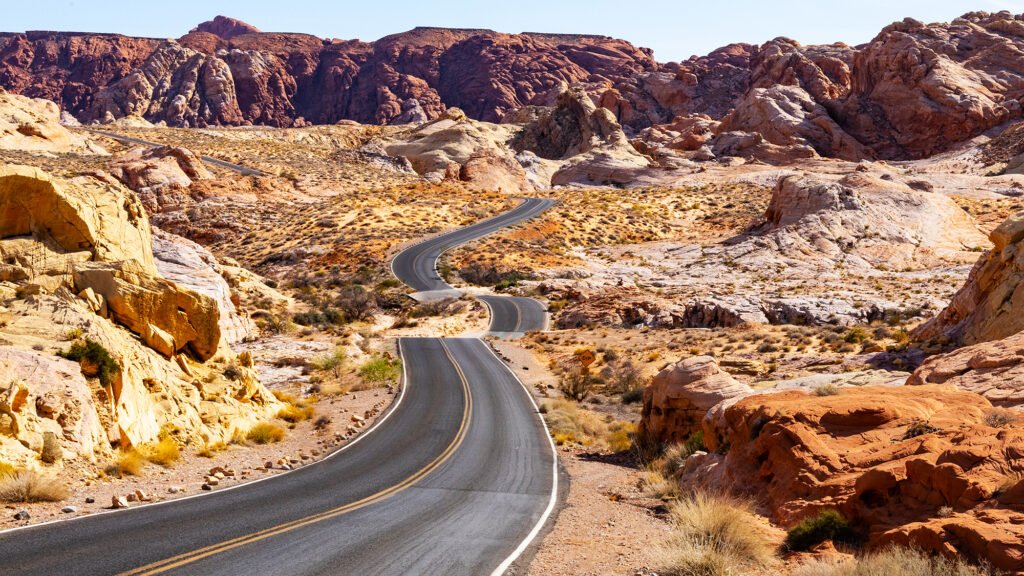
The Valley of Fire
Engulfed in brilliant red rock formations in every direction, herds of Nevada bighorn sheep, and just about the entire population of Las Vegas tourists, one of the most surreal (paved) drives in all of Nevada awaits on the edge of Lake Mead: Valley of Fire State Park. Nevada’s first and oldest state park is absolutely stunning and is unquestionably one of the easiest ways to get up close to excellent thrust faulting, which, like Red Rock Canyon National Conservation Area’s Keystone Thrust, is so vibrant your eye almost cant register what it is you’re seeing, especially contrasted against those bright blue Looney Tunes skies with white fluffy clouds.

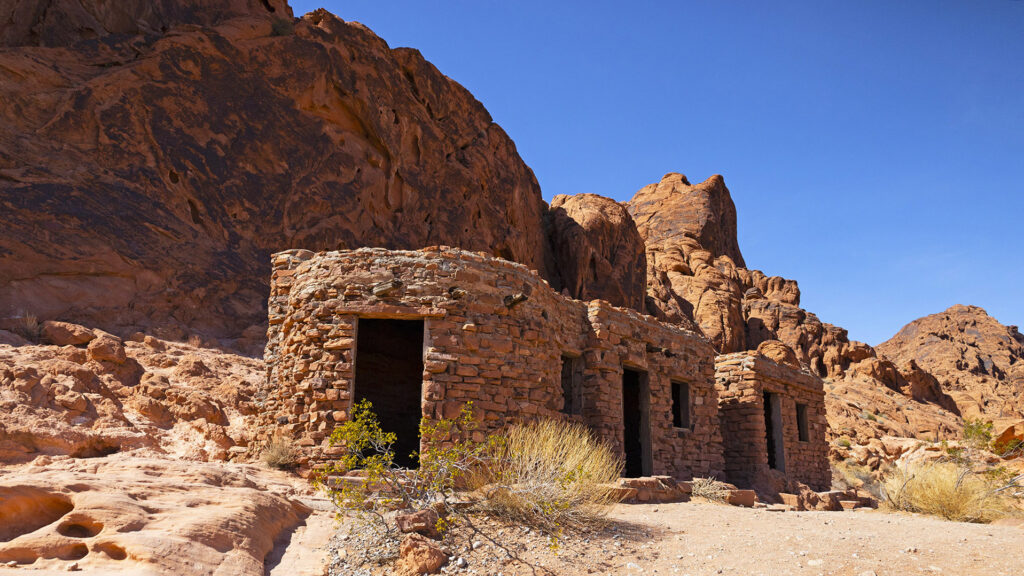
It’s an absolutely stunning place, and from Mouse’s Tank, to White Dome, to Atlatl Rock, the Bacon Wave, Elephant Rock, and roadscapes so perfect it attracts thousands of high end commercial shoots each and every year, it’s hard to not point your camera in any direction and come back with a brain-bending shot. But for me, being out in Nevada revolves around, more often than not, having it mostly to ourselves and not having to fight swarms of badly behaved crowds dropping litter, parking in places and hiking on rock formations where they shouldn’t, and all around eclipsing our experience of the place. In other words, tourism is a problem here, and the park is in a crisis to handle it just about every year. I have seen and personally hiked most of all the major formations in the park, but the Valley of Fire is one of those places my husband, dog and I would prefer seeing out the window of the truck—after all, that scenic byway splicing right through through it is enough to hold your attention now and in the next life, especially if you plan your trip around that late afternoon light.
Thrust faulting, which is what happens when one section of land slips over the other, is more common in this part of Nevada (at least when it comes to that bright red Aztec sandstone) and on prime display at Red Rock, Gold Butte, and of course the Valley of Fire, which is how it earned its designation as one of Nevada’s 6 National Natural Landmarks. But man has been drawn to this area for thousands upon thousands of years—the pros predict people have lived in the Moapa Valley region for 11,000 years or more. This group of people, sometimes called the Ancestral Puebloan or Basketmaker Culture, first lived in the region—look for evidence of their lives by some really impressive petroglyphs panels throughout the park, and at the Lost City Museum in nearby Overton, too.
By 1912, the Arrowhead Trail, which was an old highway system that connected from Salt Lake City to Los Angeles, went through these vibrant red rocks—it was then when it became known as the Valley of Fire. And fun fact: like the Loneliest Road in America, Valley of Fire was also named by an AAA travel writer. Later on in the early 1930s, the Civilian Conservation Corps (which is one of my absolute favorite threads of American and Nevada history) made Valley of Fire Nevada’s first state park, building roads, trails, shade structures, restrooms, and of course the legendary “CCC Cabins”, which during the 1930s visitors could actually overnight in during their visit to the park, and now are another historic park attraction available for day use only.
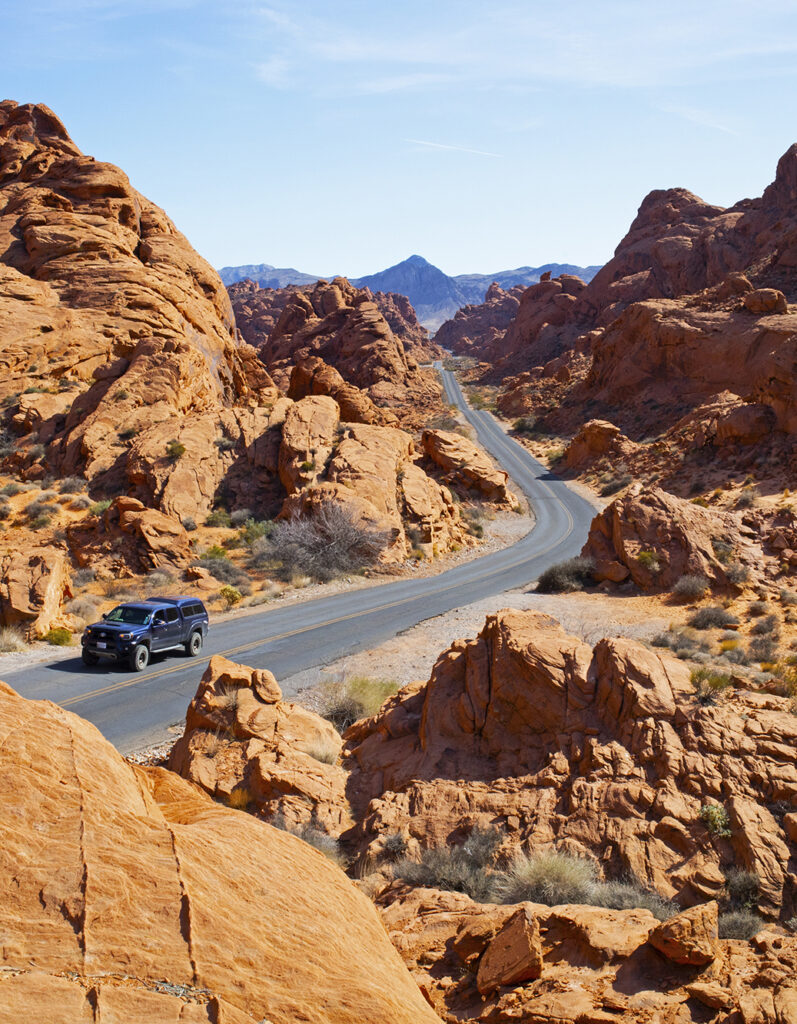
Besides its vast geologic and anthropomorphic histories, Valley of Fire to me is all about the roads. You won’t experience this National Natural Landmark any better than from a road that ribbons right through it—I can promise you that. There will be crazy tourists parked in all the wrong places, and there will be others tailing you every now and then, but even for the brief moments when you round a curve a the vista is yours and only yours, whether you’re in a Model T or Toyota Tacoma the thrill is just the same no matter what century you’re in.










